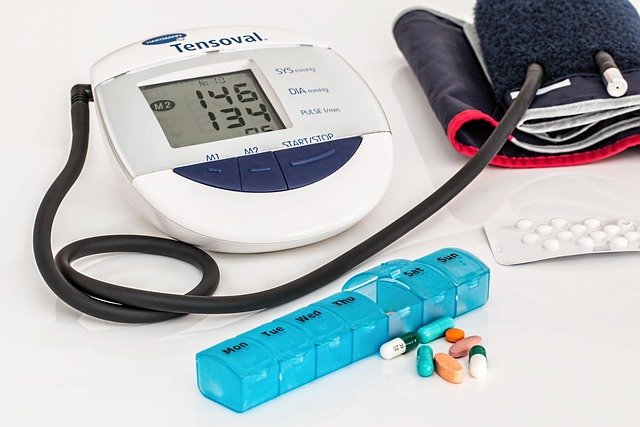Solutions for treating hypertension
Hypertension, commonly known as high blood pressure, is a prevalent health concern affecting millions of people worldwide. If left untreated, it can lead to severe complications such as heart disease, stroke, and kidney problems. Fortunately, there are numerous effective solutions for managing and treating hypertension. This article explores various methods to control high blood pressure, from lifestyle changes to medical interventions, helping you understand the best approaches to maintain a healthy blood pressure level.

What are the first steps in treating hypertension?
The initial approach to treating hypertension often involves lifestyle modifications. These changes can significantly impact blood pressure levels and overall health. Some key steps include:
- Adopting a healthy diet: Emphasize fruits, vegetables, whole grains, and lean proteins while reducing sodium intake.
- Regular exercise: Aim for at least 150 minutes of moderate-intensity aerobic activity per week.
- Maintaining a healthy weight: Losing excess weight can help lower blood pressure.
- Limiting alcohol consumption: Stick to recommended guidelines of no more than one drink per day for women and two for men.
- Quitting smoking: Smoking increases blood pressure and the risk of heart disease.
These lifestyle changes not only help in managing hypertension but also contribute to overall well-being and reduced risk of other health issues.
How can diet and nutrition impact blood pressure?
Diet plays a crucial role in managing hypertension. The DASH (Dietary Approaches to Stop Hypertension) diet is particularly effective in lowering blood pressure. This eating plan emphasizes:
- Fruits and vegetables
- Whole grains
- Low-fat dairy products
- Lean meats, fish, and poultry
- Nuts, seeds, and legumes
Reducing sodium intake is equally important. Aim for less than 2,300 mg of sodium per day, or even lower if advised by your healthcare provider. Increasing potassium intake through foods like bananas, sweet potatoes, and spinach can also help balance blood pressure levels.
What role does exercise play in controlling hypertension?
Regular physical activity is a powerful tool in managing hypertension. Exercise helps strengthen the heart, allowing it to pump blood more efficiently and with less effort. This, in turn, reduces the pressure on arteries. Recommended types of exercise include:
- Aerobic activities: Walking, jogging, cycling, or swimming
- Strength training: Using weights or resistance bands
- Flexibility exercises: Stretching and yoga
Aim for at least 30 minutes of moderate-intensity exercise most days of the week. It’s important to start slowly and gradually increase intensity and duration, especially if you’ve been inactive. Always consult with your healthcare provider before starting a new exercise regimen, particularly if you have existing health conditions.
What medications are used to treat hypertension?
When lifestyle changes alone aren’t sufficient to control blood pressure, medications may be necessary. Several classes of drugs are used to treat hypertension:
- Diuretics: Help the body eliminate excess sodium and water
- ACE inhibitors: Relax blood vessels by blocking a hormone that causes narrowing
- Angiotensin II receptor blockers (ARBs): Similar to ACE inhibitors but work differently
- Calcium channel blockers: Relax blood vessel muscles
- Beta-blockers: Reduce heart rate and the heart’s workload
The choice of medication depends on various factors, including age, overall health, and other medical conditions. It’s common for individuals to take a combination of these medications to effectively manage their blood pressure.
What are some new advances in hypertension treatment?
Recent years have seen exciting developments in hypertension treatment. Some notable advances include:
- Renal denervation: A minimally invasive procedure that uses radiofrequency ablation to target nerves in the kidneys that contribute to high blood pressure.
- SGLT2 inhibitors: Originally developed for diabetes, these medications have shown promise in lowering blood pressure in some patients.
- Personalized medicine: Genetic testing to determine the most effective medication for individual patients.
- Digital health tools: Apps and wearable devices that help monitor blood pressure and encourage adherence to treatment plans.
- Combination pills: Single tablets containing multiple blood pressure medications to improve convenience and adherence.
These innovations offer new hope for patients who struggle to control their blood pressure with traditional methods.
What happens if hypertension is left untreated?
Untreated hypertension can lead to serious health complications. Understanding these risks is crucial for emphasizing the importance of proper treatment:
- Heart disease: Increased risk of heart attack, heart failure, and coronary artery disease
- Stroke: Higher likelihood of both ischemic and hemorrhagic strokes
- Kidney damage: Potential for chronic kidney disease or kidney failure
- Vision problems: Risk of retinopathy and vision loss
- Cognitive decline: Increased risk of vascular dementia and Alzheimer’s disease
- Peripheral artery disease: Narrowing of arteries in the limbs, potentially leading to pain and mobility issues
| Complication | Risk Increase | Potential Outcomes |
|---|---|---|
| Heart Disease | 2-3 times higher | Heart attack, heart failure |
| Stroke | 4-6 times higher | Paralysis, speech problems, death |
| Kidney Damage | Progressive | Dialysis, kidney transplant |
| Vision Problems | Gradual | Partial or complete vision loss |
| Cognitive Decline | 1.5-2 times higher | Memory loss, dementia |
Prices, rates, or cost estimates mentioned in this article are based on the latest available information but may change over time. Independent research is advised before making financial decisions.
Effectively managing hypertension is crucial for long-term health and well-being. By combining lifestyle modifications, appropriate medications, and regular monitoring, most people can successfully control their blood pressure. It’s important to work closely with healthcare providers to develop a personalized treatment plan and stay informed about new advances in hypertension management. With the right approach, it’s possible to minimize the risks associated with high blood pressure and maintain a healthy, active lifestyle.
This article is for informational purposes only and should not be considered medical advice. Please consult a qualified healthcare professional for personalized guidance and treatment.
The shared information of this article is up-to-date as of the publishing date. For more up-to-date information, please conduct your own research.




